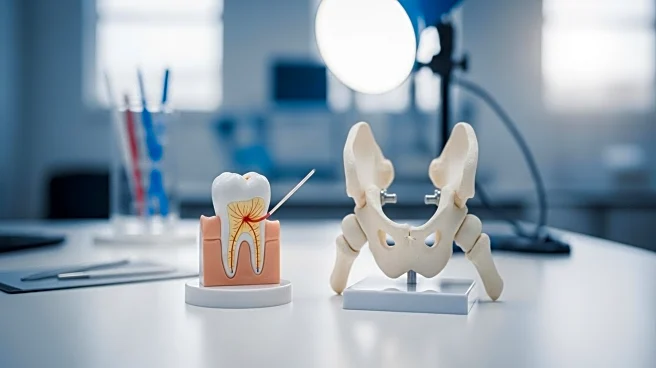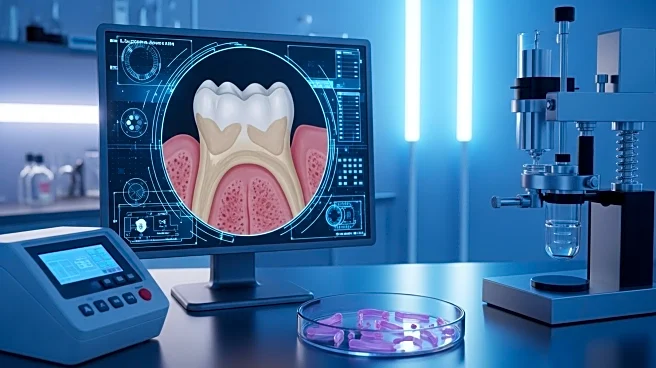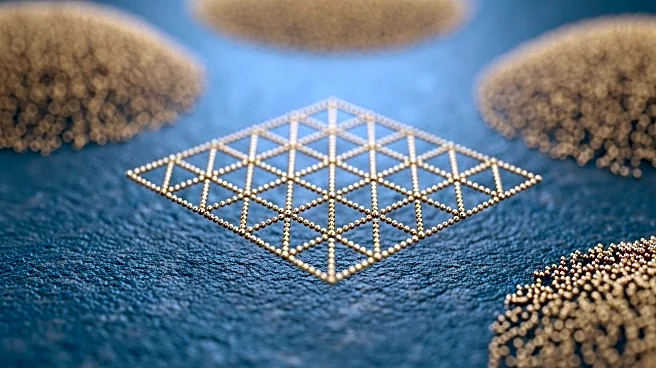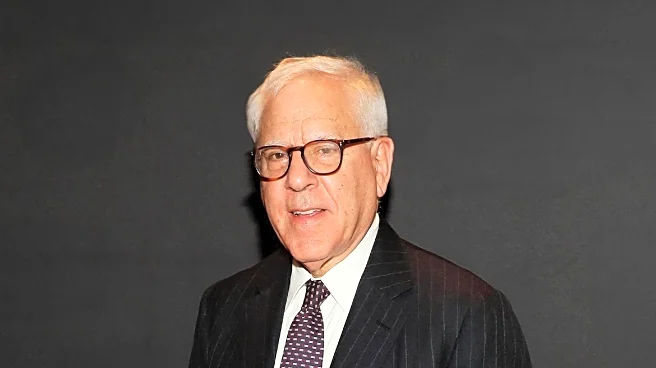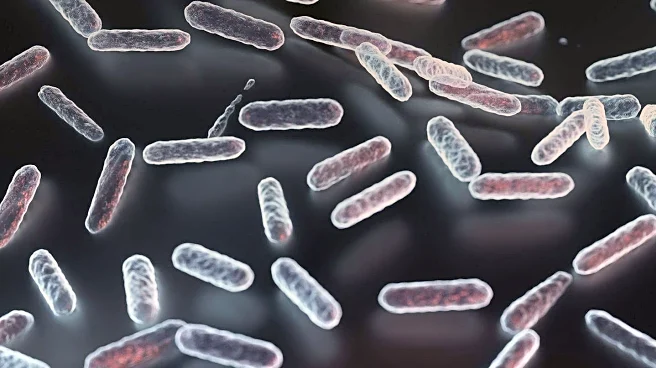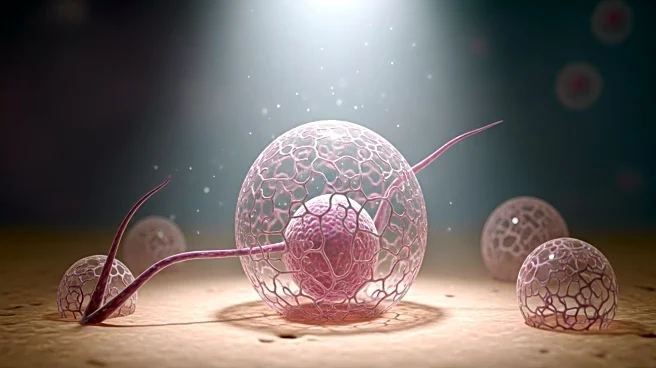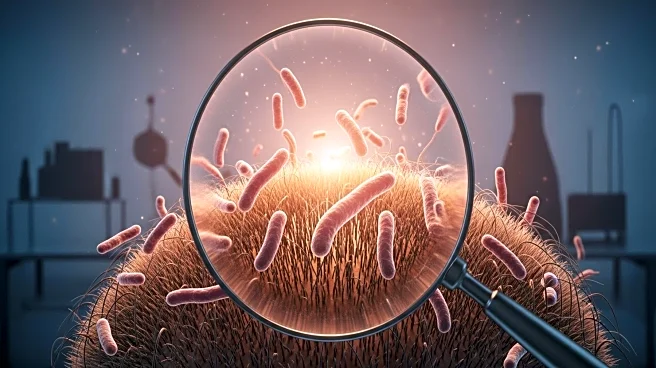What's Happening?
Researchers at Science Tokyo have discovered two distinct stem cell lineages responsible for forming tooth roots and the alveolar bone that anchors teeth in the jaw. Using genetically modified mice and lineage-tracing methods, the team uncovered how specific signaling pathways direct stem cells to specialize during tooth development. This discovery provides valuable insights that could advance regenerative dentistry. The study identified a previously unrecognized population of mesenchymal stem cells that give rise to two distinct lineages: one associated with tooth root development and the other with alveolar bone formation. The findings offer a mechanistic framework for tooth root formation and pave the way for innovative stem-cell-based regenerative therapies for dental pulp, periodontal tissues, and bone.
Why It's Important?
The ability to regrow lost teeth and their surrounding bone structures is a significant goal in dental science. Current tooth replacement methods, such as dental implants and dentures, cannot fully replicate the natural feel or biological integration of real teeth. This discovery could lead to regenerative treatments that restore lost teeth more completely, addressing the limitations of artificial substitutes. By understanding the molecular and cellular mechanisms guiding stem cell differentiation in developing teeth, researchers can develop therapies that mimic natural tooth formation, potentially revolutionizing dental care and improving patient outcomes.
What's Next?
The findings from Science Tokyo's research could lead to the development of stem-cell-based regenerative therapies for dental pulp, periodontal tissues, and bone. Future research may focus on refining these therapies and testing their efficacy in clinical settings. Researchers may also explore how these stem cells can be used in other regenerative applications, potentially expanding their use beyond dental treatments. Collaboration with other institutions and continued funding from organizations like the National Institutes of Health and the Japanese Society of Periodontology will be crucial for advancing this research.
Beyond the Headlines
The discovery of these stem cell lineages highlights the complexity of tooth and bone formation, which involves coordinated activity among multiple tissues. Understanding these processes could lead to broader applications in regenerative medicine, potentially benefiting other areas of healthcare. Ethical considerations regarding stem cell research and its applications may arise, necessitating careful regulation and oversight to ensure responsible use of these technologies.
